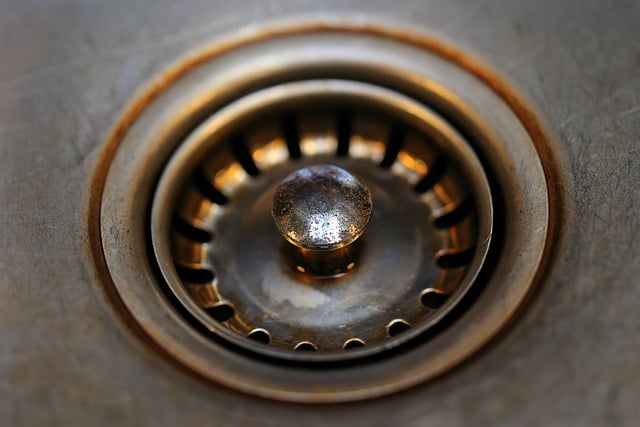Dealing with a clogged drain is a common household issue that can disrupt daily routines. Whether it’s a kitchen sink, shower, or toilet, knowing how to unclog drain efficiently can save time, money, and stress. This guide explores proven methods to tackle blockages and keep your plumbing flowing smoothly.
Read about Hydro Jetting here!
Common Causes of Clogged Drains
Understanding what causes clogged drains can help you prevent them in the future. Some typical culprits include:
- Grease and Food Particles in kitchen sinks.
- Hair and Soap Scum in shower drains.
- Toilet Paper and Hygiene Products causing a clogged commode or toilet.
Identifying the source of the blockage is the first step in effectively unclogging it.
How to Unclog a Drain
There are several methods to unclog a drain, depending on the type and severity of the blockage.
- Plunger Method
A plunger is a simple and effective tool for most clogged drains. It works by creating suction to dislodge the blockage. - Snaking a Drain
A plumbing snake or drain auger is a flexible tool that can reach deep into the pipes to break up clogs. It’s ideal for unclogging shower drains, sinks, and toilets. - Baking Soda and Vinegar
For minor clogs, a combination of baking soda and vinegar can dissolve grease and debris. Pour the mixture down the drain, wait 15 minutes, and flush with hot water. - Boiling Water
Boiling water is another effective solution for grease and soap clogs in kitchen and bathroom sinks. Pour it slowly into the drain in stages to clear the blockage.
How to Unclog a Toilet
Unclogging a toilet requires specific techniques to avoid damaging the plumbing.
- Unclog Toilet with a Plunger
A toilet plunger with a flange creates a tight seal over the drain, making it easier to push the clog through. Use firm, consistent pressure for the best results. - Snaking a Toilet
For stubborn clogs, use a toilet auger or plumbing snake. Insert the snake into the drain and twist the handle to break up or remove the blockage. - Unstopping a Toilet with Hot Water and Dish Soap
Pour hot (not boiling) water mixed with dish soap into the toilet bowl. Let it sit for 15 minutes to loosen the clog, then flush.
How to Unclog a Shower Drain
A clogged shower drain is often caused by hair and soap scum buildup. Here’s how to unclog it:
- Remove the Drain Cover
Use a screwdriver to remove the shower drain cover. - Use a Drain Snake
Feed the snake into the drain, rotating it to latch onto the clog. Pull it out and dispose of the debris. - Chemical Drain Cleaners
If mechanical methods don’t work, use a chemical drain cleaner. Follow the instructions carefully to avoid damaging your pipes.
When to Call a Professional
While many clogs can be handled with DIY methods, some situations require professional help:
- Persistent clogs that return frequently.
- Water backing up into other drains.
- Complete blockages that DIY methods cannot resolve.
A plumber can use advanced tools and techniques to diagnose and resolve severe plumbing issues.
Preventing Clogged Drains
Prevention is always better than cure. Here are some tips to keep your drains clear:
- Use Drain Screens
Install screens over shower and sink drains to catch hair and debris. - Dispose of Grease Properly
Avoid pouring grease down the sink. Instead, collect it in a container and discard it in the trash. - Flush Drains Regularly
Periodically pour hot water or a mixture of baking soda and vinegar down your drains to prevent buildup. - Limit Toilet Paper Use
Excess toilet paper can lead to a clogged commode. Use only as much as necessary and avoid flushing anything non-flushable.
Benefits of Maintaining Clear Drains
- Improved Water Flow
Clear drains allow water to flow freely, preventing backups and overflows. - Cost Savings
Preventive maintenance reduces the need for costly plumbing repairs. - Enhanced Hygiene
Clean drains reduce odors and minimize the risk of bacteria buildup.
Frequently Asked Questions
What is the best way to unclog a drain naturally?
A combination of baking soda and vinegar followed by hot water is an effective natural method for clearing minor clogs.
Can I use a plunger on any drain?
Yes, plungers can be used on most drains, but it’s important to use the right type. A standard plunger is suitable for sinks and tubs, while a flange plunger works best for toilets.
How do I know if my clog requires professional help?
If water backs up into other drains, or DIY methods fail to clear the blockage, it’s time to call a plumber.
Conclusion
Unclogging a drain doesn’t have to be a daunting task. Preventative measures like regular maintenance and proper disposal of waste can further reduce the likelihood of blockages. For persistent or severe issues, consulting a professional plumber ensures that your plumbing system remains in top condition. Keep these tips in mind to handle clogged drains with confidence and maintain a smoothly running household.
